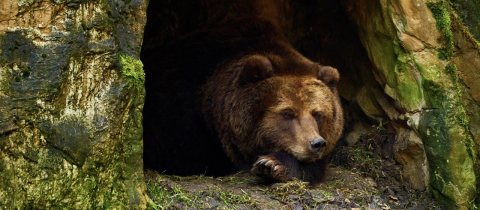In some areas of British Columbia pine forests, little pouches about ten centimeters wide can be seen hanging from the trees. What is their purpose?To protect the trees from attack by the mountain pine beetle. The little bags contain verbenone, a chemical normally released by beetles as they lay their eggs just under the bark of a pine tree, telling other beetles that “this tree is taken.” Using verbenone in this fashion is an attempt to curb the destruction caused by these “bark beetles,” as they are commonly called. The destruction is devastating, as is evident to anyone flying over the pine forests of western Canada or the U.S. Rust colored pines, the hallmark of beetle infestation pollute the green landscape everywhere. This pox is not only a visual blight, the sickly brown trees are dry and present a fire hazard.
There are also obvious implications for the forestry industry, since any wood harvested from infected trees is of poor quality. Beetles carry out their dirty work by boring through the bark to lay their eggs, in the process damaging the tubules through which the tree is supplied with water and nutrients. And as if that weren’t enough, the beetles also contaminate the tree with the ascomycete fungus which stains the wood blue and wreaks further havoc on the tubules. Foresters have tried thinning forests before an outbreak, removing dead trees, diversifying trees and various insecticides but nothing has been able to stem the onslaught. While insecticides such as carbaryl, bifenthrin or permethrin can dispense with the beetles, they also harm beneficial insects and put animals and people at some risk. Injecting insecticides such as abamectin, emamectin benzoate or imidacloprid into the tree is a safer approach but problematic to apply on a large scale.
There is hope that some advantage may be gained by using the beetles own chemistry. Once the bugs burrow into the tree, they use some of the tree’s chemicals to synthesize verbenone, a communicating agent, or pheromone. When this is wafted into the air, the message to other beetles is, “this tree is occupied, look elsewhere.” Verbenone can be synthesized in the laboratory and hung on branches in little satchels, protecting the trees from bark beetle attack. While the technique works, due to the expense involved it isn’t very practical on a large scale, but can be used to protect trees near homes, campgrounds or resorts. Given the prospect of global warming, the beetle problem is likely to become worse as larvae are more likely to survive balmy winter temperatures.







